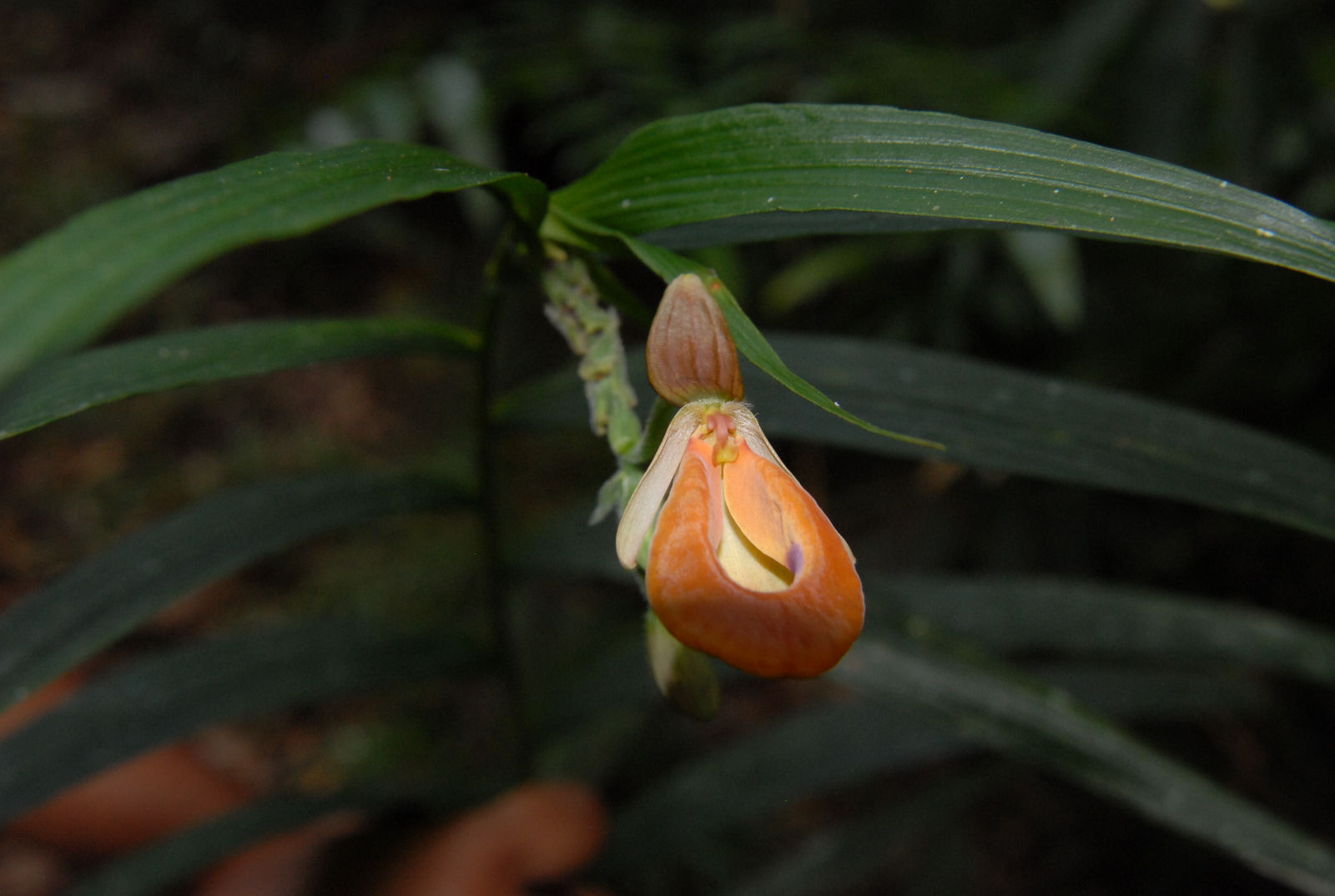-
General Description
-
Tall terrestrial herbs. Roots elongate, fibrous, arising from a short to elongate rhizome; rhizomes present, short, creeping, rather fleshy. Stems erect, 2-5 m tall, often branching, rather woody, leafy, clustered or well spaced, terete, hairy, enclosed by sheathing sterile bracts below and leaf bases above, several-leaved; pseudobulbs absent. Leaves spreading or suberect, several-many, plicate, many-veined, elliptic-lanceolate to linear-lanceolate, acute or acuminate, green, glabrous or sparsely hairy, ciliate or not on the margins, contracted at the base to form a cylindrical sheath. Inflorescence terminal, racemose or branching from base, many-flowered; rachis terete, densely hairy; bracts usually leaf-like but much smaller than the uppermost leaf, lanceolate, hairy. Flowers with a persistent perianth, small to medium-sized, resupinate, concolorous or bicoloured; pedicel obscure to short, hairy; ovary trilocular, with parietal placentation, three-ribbed, hairy, crowned with a marcescent perianth. Sepals valvate. Dorsal sepal erect to hooded over lip, ovate or elliptic, obtuse or acute, pubescent on the outer surface, ciliate or not; lateral sepals usually fused to form a concave synsepal that is similar to the dorsal sepal, but free at the tips, pubescent on outer surface, ciliate or not. Petals free, spreading or incurved, lanceolate or linear-lanceolate, blunt, acute or acuminate, often pubescent in basal half within, not ciliate. Lip deeply pouched and inflated, slipper-shaped, glabrous on outer surface; side lobes obscure, incurved, entire; midlobe deeply saccate, calceiform or urceolate, incurved on front margin, hairy within especially on lower surface. Column porrect, short, stalked; anthers two, bilocular, borne on short obtuse filaments; pollen powdery or viscid; staminode terminal on column, more or less sessile or stalked, ovate or trullate, somewhat conduplicate, glabrous; stigma very short stalked, dependent, trisulcate, papillose or not, wider than the staminode. Capsule spreading to dependent, three-ribbed, cylindrical to fusiform, smelling of vanilla; seeds subglobose, crustose. (PC)
-
Ecology
-
Of all the slipper orchids the least known is the genus Selenipedium. There are probably several causative factors for the dearth of knowledge. None of the species is particularly attractive and so are not sought by collectors. Out of flower they appear very much like the palms, bamboos, and tall grasses with which they grow, seeming to hide within the subtle camouflage. The species exhibit even more patchy distributions than their counterparts and so are difficult to locate. As with so many orchids, they are usually found when looking for something else.
Selenipedium contains perhaps six species which range from central Panama to Peru, central Brazil, and Trinidad but not the Caribbean Islands. Reports from Costa Rica have not been substantiated, yet a gap in range of plicate-leaved slipper orchids from central Panama to Guatemala seems odd. It is curious that none is known from southern tropical or temperate South America, a fact that may reflect a rather recent immigration through Central America. The subtle differences in species suggest that they may all have descended from a single recent ancestor. Isolation on mountain slopes should not be a major obstacle to dispersal as these are lowland plants with the exception of S. steyermarkii that ranges to 1800 m (Foldats 1969; Carnevali and Ramírez de Carnevali 1993). Perhaps the relatively large crustose seeds seriously impede dispersal, despite the fragrance of vanilla recorded in some species that has been suggested to entice collection by insects.
As with Cypripedium, all species of Selenipedium are terrestrial but are tropical, and all may prefer acid soils as none is documented in association with limestone or serpentine. Most attempts at transplantation have failed, suggesting a high reliance on mycorrhizae, but the single S. aequinoctiale has been successfully transplanted (C. H. Dodson, personal communication).
At least one of the species (S. chica) seems to prefer some kind of disturbance as do many Cypripedium species. In the late 1970s Atwood (unpublished) visited a known station of Selenipedium chica on Cerro Campana, Panama, discovered by Robert Dressler. There were five clumps growing clearly in a secondary forest with palms and bamboos of similar size. Despite several extensive searches, no other plants were seen. Either these plants had persisted as relicts or had become established by seed from some other source. Even more bewildering was the equal spacing of the plants, as though they had been planted. Dressier (1989a) related that S. chica was once used as a flavouring (Vanilla chica) by the indigenous peoples. Any history of their attempts to cultivate it seems to have been lost. (JA).
-
Distribution
-
A small genus of about five or possibly six species in the tropical Americas from Panama and Trinidad, south to Venezuela, the Guyanas, Brazil, Colombia, and Ecuador.





